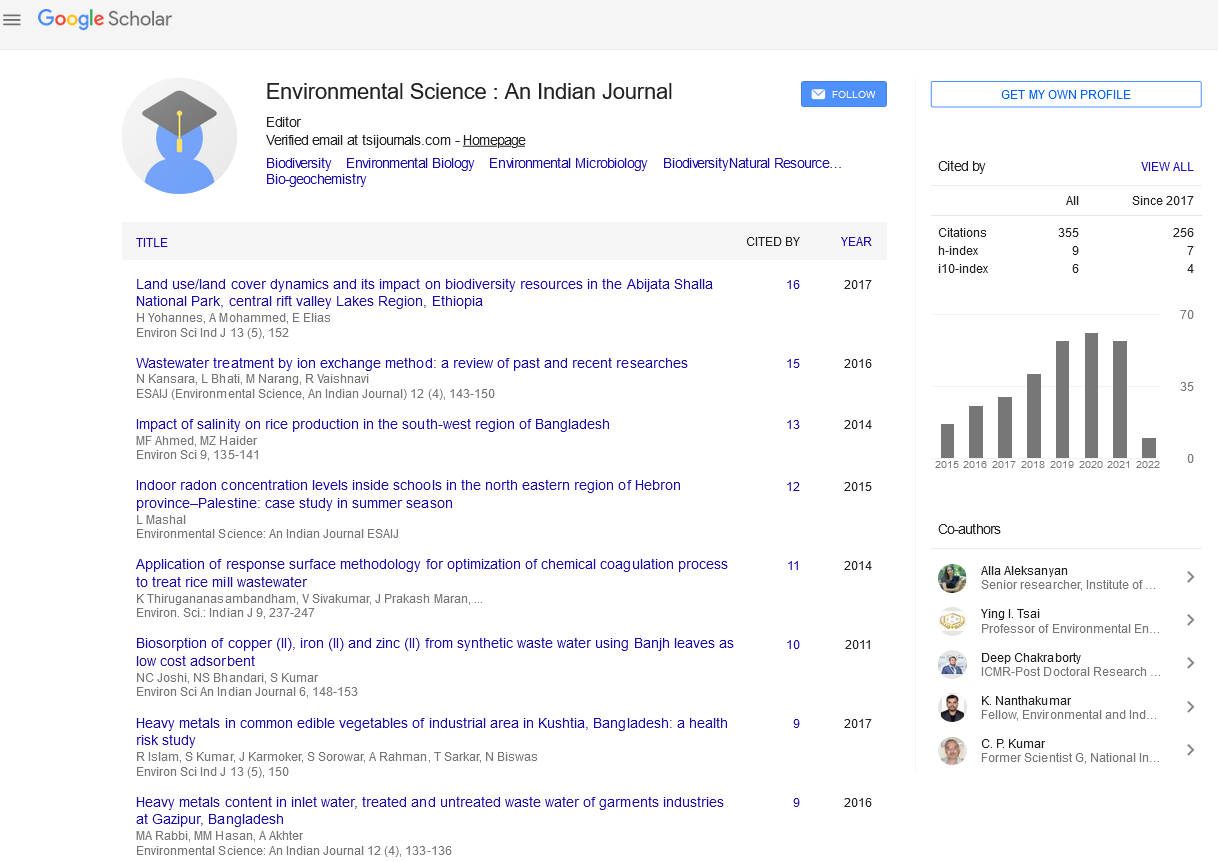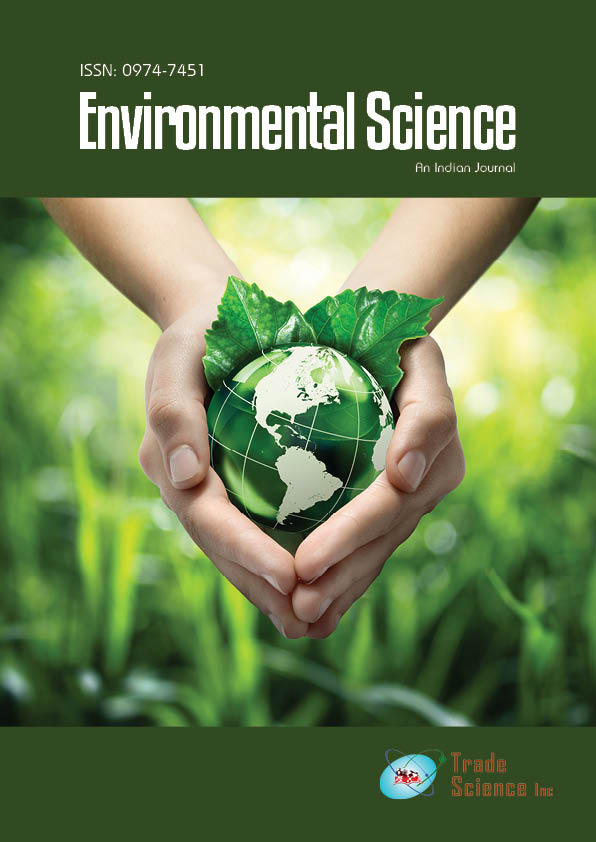Abstract
Airborne algal bio-particulates in Jharia coalfields: Prevalence, characterization and their allergen city.
Author(s): L.L.Naik, P.S.M.Tripathi, S.K.Bharti, P.K.MishraAbiotic and biotic particulates constitute the airspora of the coalfield region, which, singly and/or in association with fine coal dust particles, after coming in contact with human beings cause different kinds of allergic ailments. Among different bio-allergens found in coalfield environments, algae, with different compositions and in varying concentrations, have also their share for causing various allergic disorders in humans. Notwithstanding the prevalence of different types of algae in the atmosphere of Jharia Coalfields owing to the most favorable climatic conditions (rainfall, temperature, Relative Humidity, light) and also the occurrence of allergic diseases in the coalfields, surprisingly nowork has been done on the coalmining and coal-based industriesÂ’ area-specific bio-allergens, of which algae constitute an important allergenic constituent. Reported for the first time in the present paper are the results of our investigation on the prevalence, characterization, and seasonal vatiation of coalmining area-specific airborne algal flora present in the environments of Jharia coalfields. In all 13 coalfieldspecific algae have been found and identified in the present study, which are prevalent in the atmosphere of Jharia Coalfields. They include : Anabaena, Chlorella, Chlorococcum, Fragilaria, Gloeocapsa, Lyngbya, Navicula, Nostoc. Oedogonium, Oscillatoria, Phormidium, Plectonema and Spirogyra. They are both unicellular and colonial, and diatoms, belonging to class Chlorophyceae and Cyanophyceae respectively. The results have evinced that the concentration of the algae varies with the variation in meteorological parameters (temperature, rainfall, relative humidity, light), and that the algal load (population) is subject to seasonal variation, being totally absent during summer (April,May), moderate during the months of December to March and maximum during rainy season (August to October). Twomajor factors, viz., physiological ability of an algal group to tolerate different types of abiotic stresses, and the climatic conditions prevailing in the area,, seem to be responsible for regulating the structure of the aeroalgal community in the atmosphere of any specific area-coalfiels in the P.S.M.Tripathi et al. 379 Current Research Paper ESAIJ, 5(6) 2010 An Indian Journal Environmental Science INTRODUCTION Duringcoalminingoperations,notonlyseveredegradation of land takes place but also the ecology and environment of the area is badlydisturbed, invariably simultaneouslyaccompaniedbyrelease ofdust and also abiotic particulatematter (SPM,RSPM, SOx, andNOx) and biotic particulates due to disturbance of flora and fauna thriving in themined and nearby areas.According to an estimate[1], the coal dust generated through all mining operations include : top soil removal (69.9kg/ day), overburden removal (666.0kg/day), extraction of coal (365.9kg/day), size reduction of mined coal (6812.5kg/day), thusmakingthecumulativemininggenerated dust to be ca. 6812.6kg/per day. In addition to this, the amount ofwind-generated dust is tothe tune of 1568kg/day, depending upon thewind velocity, direction, and othermicro-meteorological conditions.This cumulatively generated huge quality of dust is not all dispersed into the atmosphere, rather the larger particles of the dust settle down and get deposited on the soil,while the small andmicro-sized particles become suspended in the atmosphere alongwith other abiotic and biotic particulates.Thus, the atmospheric bio-particulates - alone, and in combinationwith fine coal dust particles, constitute the airspora of the coalfield areas. Some of the constituents of this airspora, after coming in contactwith human beings, cause different allergic manifestations.Avarietyof bio-allergens are prevalent in coal-mining and coal-based industriesÂ’ area environments, including pollen grains, fungi, algae, and house dustmites,whichareofdifferentcompositions andvarying concentrations. These coalfield-specific bio allergensmore particularly algae have not yet been properlyidentified and studied. Defined botanically, algae are thalloid prokaryotic (Cyanophycene and Prochlorophycene) and eukaryotic (Rhodophycene, Cryptophycene,Dinophycene, Heterokontophytes,Hepto-phyoceae,Euglenophyceae, andChlorophytes)photosyntheticorganismswith chlorophyll- a and other photosynthetic pigments-releasing O2. The body of thesemicroscopic or near-microspic, simple autotrophic algae, being ofwidespread occurrence, is unicellular, colonial, filamentous, siphoneous, and parenchymatous, neverwith roots, stems or leaves. Their sex organs being unicellular ormulticellularwith all cells fertile (exceptCharales), these algae typically possess inherent potentialities for their distribution through themediumof atmosphere.While some algae are beneficial (e.g single cell green algae,which, apart frombeing endowedwith such properties as detoxification, andstimulatingfriendlybacteriainthebody,containsgreenphotosyntheticpigment chlorophyllandchloroplast, is a potent source of food and its supplements), some other genera are potentially allergenic, causing allergic diseases in humans. It isnowwidelyrecognized that single-celled algae in a persistent resting stage or fragments of filamentous forms or even fragments of more colonial forms are usuallytransported in drystate bywind to different siteswhere theynot only become airborne but also activelygrowunder congenial conditions ofmoisture, temperature and light. The role of algae in air pollution and effect ofmeteorological conditions on air borne algae was reported by Smith in 1973[2],who also suggested that soil algae should also be considered alongwith airborne algae as the former ismost likelyto be disseminated bybothwind currents and thermal uplifts. Itwas further reported that yet anpresent case, While most of these algae are iinhalant types, some are both inhalants and contactants: (Anabaena, Fragilaria, Lyngbya, Phormidium) Almost all the diatoms have allergen city, with potential for causing allergic health hazards manifested by different skin, respiratory and other allergic disorders in humans living in and around coal-mining and coal-based industries Â’ areas.. The inhalant algae are potent allergens, responsible for causing hazardous allergic ailments like hay fever, nasal blockage, bronchial asthma, allergic rhinitis, eczema, persistent dermatitis and other skin diseases. The necessity for systematic identification of the particular metabolite (s) from the suspected allergic disease-causing algae and their correlation with the disease through clinical investigations has been emphasised.

